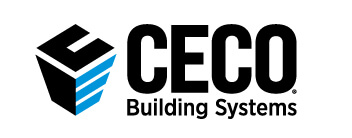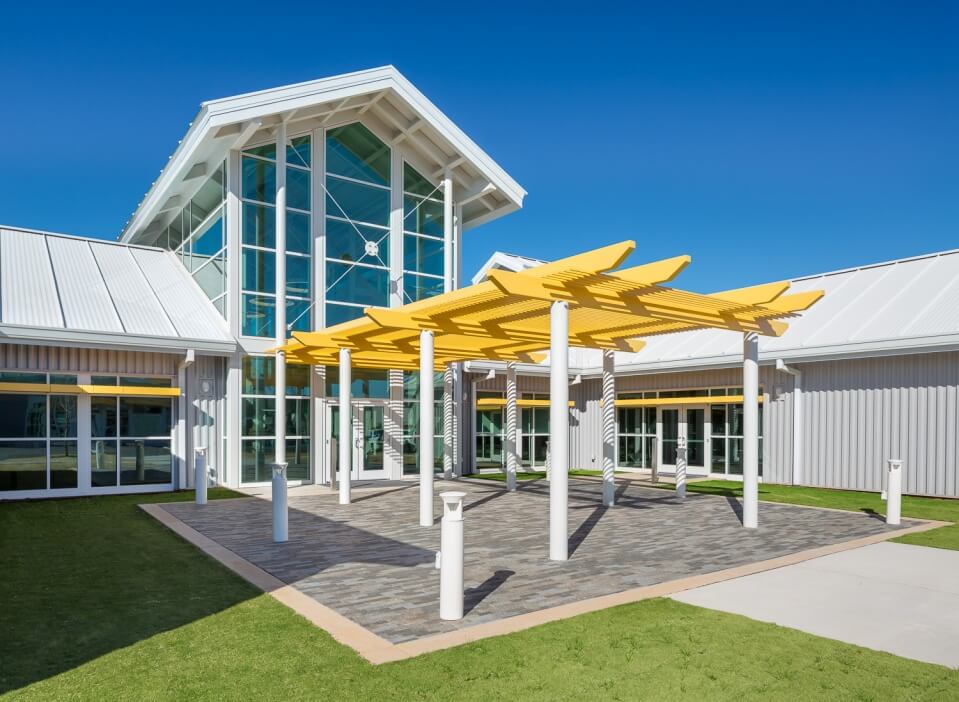Six Ways Custom Metal Buildings Achieve LEED® Status
Posted on February 26, 2020 by Greg HekmanThe LEED® (Leadership in Energy and Environmental Design) Green Building Rating System is a popular and well-established program of the US Green Building Council that helps building owners, designers, contractors, and users understand the degree to which any building is considered “green” or sustainable. Using a system of credits and points, LEED® provides a third-party review of the building design and construction, offering awards at four levels: Certified, Silver, Gold, and Platinum. A metal building system with its component products constitute only part of a total building but can nonetheless directly contribute to certain LEED® credits and points. That is why metal building systems and components have been a part of many LEED® certified buildings around the country.
While there are some variations in LEED® for different building types, the fundamental rating categories are the same. We look at each below and some of the ways that metal buildings can help achieve LEED® status either directly or indirectly.
Sustainable Sites
Metal buildings are all custom designed. That means their footprint and site impact can be controlled based on the building and site design.
Water Efficiency
All proven water conservation methods related to irrigation, drinking water, sanitation, and cleaning used in any building apply to metal buildings as well.
Energy and Atmosphere
This is the largest potential point category and metal buildings can assist here. The most significant and cost-effective means to optimize energy performance in all buildings is to address the building envelope in the following ways:
- Insulation: Metal buildings offer choices in the ways that they are insulated with fully customizable levels of insulation to suit different climate zones. Liner system fiberglass insulation with thermal spacing blocks applied to the framing allow for well-known and economical insulation techniques. Alternatively, insulated metal panels (IMPs) can be used which provide higher levels of thermal performance in a thinner depth. IMPs are shop manufactured composite products that use foam insulation between an inner and outer metal skin to form a rigid panel. Finally, any other conventional insulation methods are possible using common wall and roof insulation techniques whenever the building is enclosed with conventional construction around the metal building frame.
- Air Sealing: Metal roofing and wall cladding as a material qualify as an air barrier material under the Energy Codes and LEED®. The key, however, is that the edges of panels and all penetrations are sealed with gaskets, sealants or caulking. Air sealed wall and roof systems are available as a separate service in most cases.
- Customizable Fenestration Windows, skylights, and even translucent panels are all routinely incorporated into metal buildings with the size, shape, and energy performance characteristics all able to be specified to meet the needed criteria of a project.
- Cool Roofs Metal roofs can be specified that reflect more solar energy than they absorb to reduce the amount of heat build-up in and around a building, thus reducing the need for energy consuming air-conditioning.
- Renewable Energy The use of on-site renewable energy systems such as solar photovoltaic (PV) systems is a very cost effective means to achieve non-polluting energy needs in buildings. Metal buildings that use standing seam metal roofing are an ideal opportunity for installing such systems due to the simplified methods of mounting the PV array and the longevity of the standing seam metal roofing system, both of which translate to significant cost savings.
Materials and Resources
The Metal Building Manufacturers Association (MBMA) has funded extensive research related to the environmental impacts of materials used in metal building systems. Through collaboration with the Athena Sustainable Materials Institute and UL Environment, MBMA developed an industrywide life cycle assessment report and three industrywide environmental product declarations (EPDs) for designers to use when specifying MBMA-member products, including Ceco. These tools can be used to demonstrate green building traits related to recycled content, reduced weight, long term durability, and other aspects favorable to LEED® certification.
Indoor Environmental Quality
Metal building systems can be specified to incorporate materials that do not use or emit substances, such as volatile organic compounds (VOCs), which can be harmful to people either immediately or over time. For general psychological and emotional well-being, metal buildings can also be designed with options for natural daylight, views to the exterior, acoustical control, and similar indoor conditions that LEED® favors.
Innovation in Design
Green building standards and codes are not intended to limit creativity and innovation, in fact they tend to encourage it. Therefore, customized designs and building systems can often be used to demonstrate project specific attributes that contribute to sustainability.
To find out more about how a metal building can contribute to the creation of a LEED® certified building at any level, see the USGBC/ LEED website. You can also learn more at the Ceco website or by contacting your local Ceco representative.


